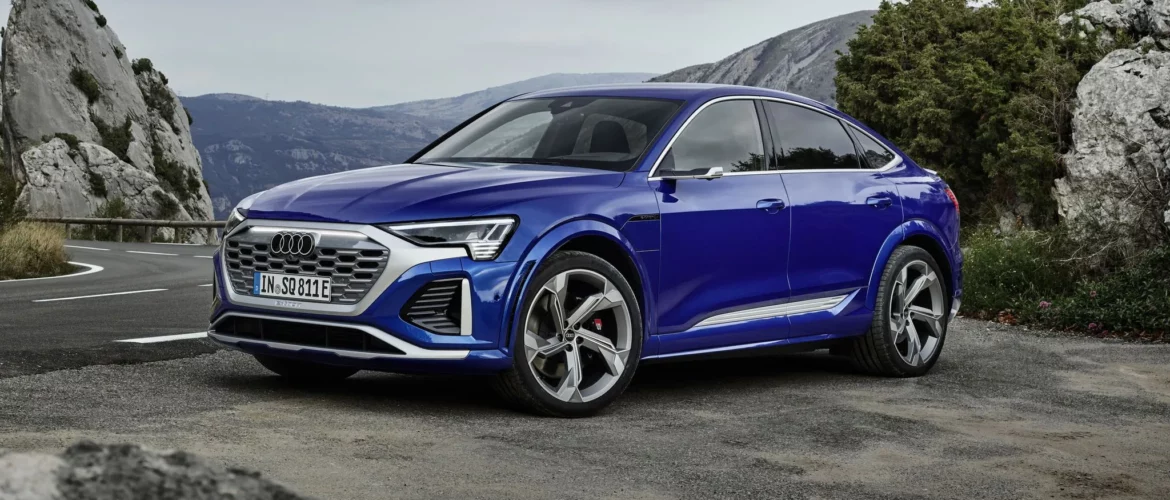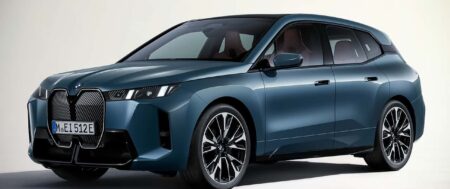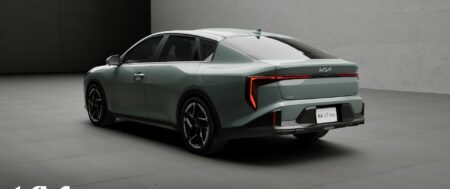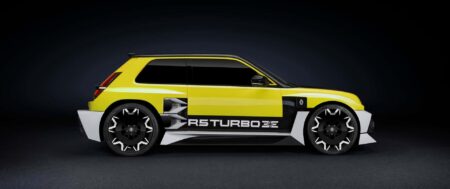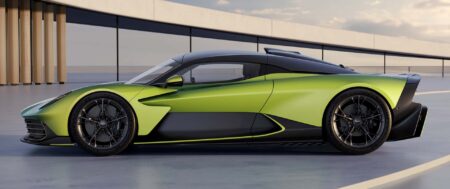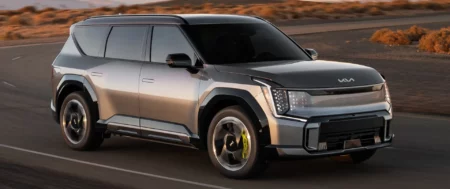Audi rebrands its Audi Q8 E-Tron SUV as it marches towards an all-EV future.
When Audi revealed its E-Tron all-electric SUV back in 2018, the automotive world was in a different place. Gas prices were down, as was demand for electric cars not named Tesla. Now, the EV race is on in earnest, with seemingly every automaker tripping over themselves to rush new and improved electrified models off their factory floors.
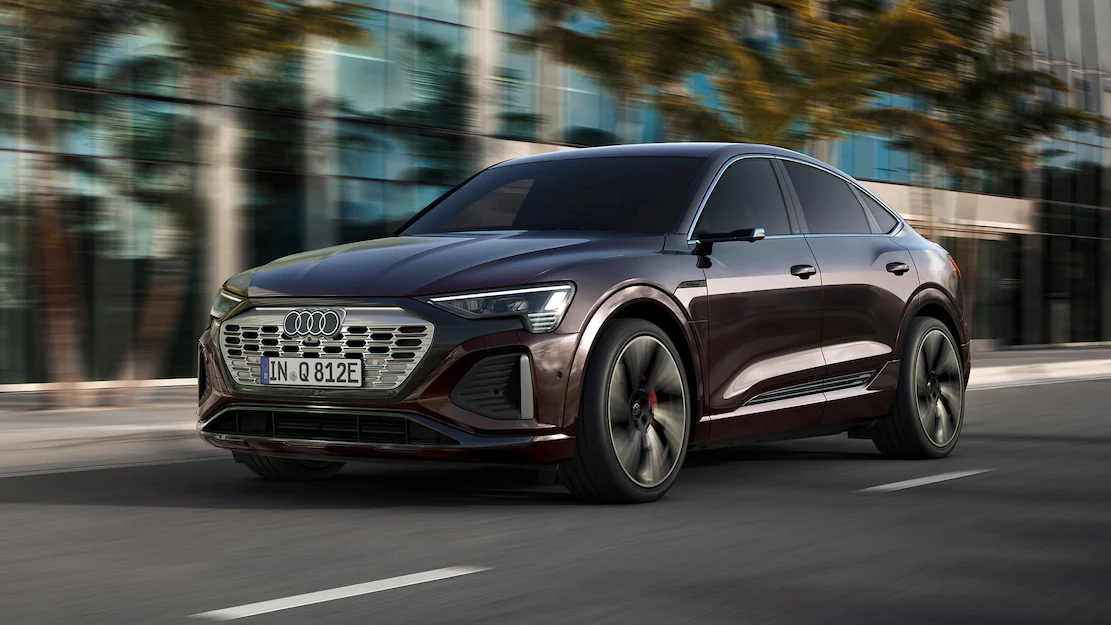
Audi’s no different, and has pledged every vehicle it builds after 2026 will be an all-electric model like its 2024 Audi Q8 E-Tron, the four-ringed marque’s new flagship EV SUV. To be clear, the Q8 E-Tron isn’t all-new; instead, it’s an evolution of the present E-Tron SUV, rolling on much the same Audi-derived platform with the same space for the battery pack under the vehicle’s floor.
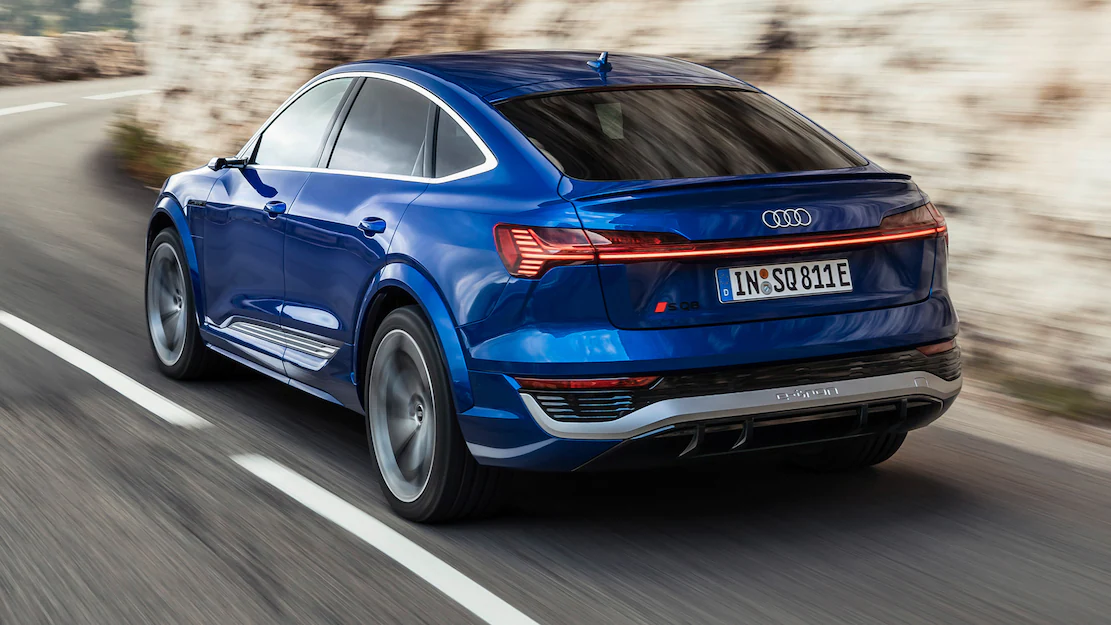
But the 2024 Audi Q8 E-Tron is new where it counts, primarily the battery and its range. Audi officials heard from customers (some 150,000 have bought E-Trons worldwide to date) who said they want (brace for it) more range and efficiency, and that’s what engineers spent a huge amount of time improving. There will be two battery sizes for global markets, a 91-kWh version and a larger 114-kWh version, the only one we’ll get here in America.
It’s All About The (300-Plus Mile) Range
What that means is a range Audi officials told us will have a three in front of it, thanks in large part to changes in how much energy the battery cells can store. How much more than 300 miles to a charge? Audi won’t say yet, but wherever it ends up, it will be considerably greater range than the present 2023 E-Tron SUV, which is EPA rated at 222 miles to a full charge in its highest capacity.
Also improved will be the Q8 E-Tron’s charging speed at a DC fast-charging station, which has been bumped to 170 kilowatts of peak charging ability for the 114-kWh battery. Audi engineers said there’s a flatter charging curve at every state of the battery, which helps to sustain a quicker charge rate of 10-80 percent of capacity in as little as 35 minutes.
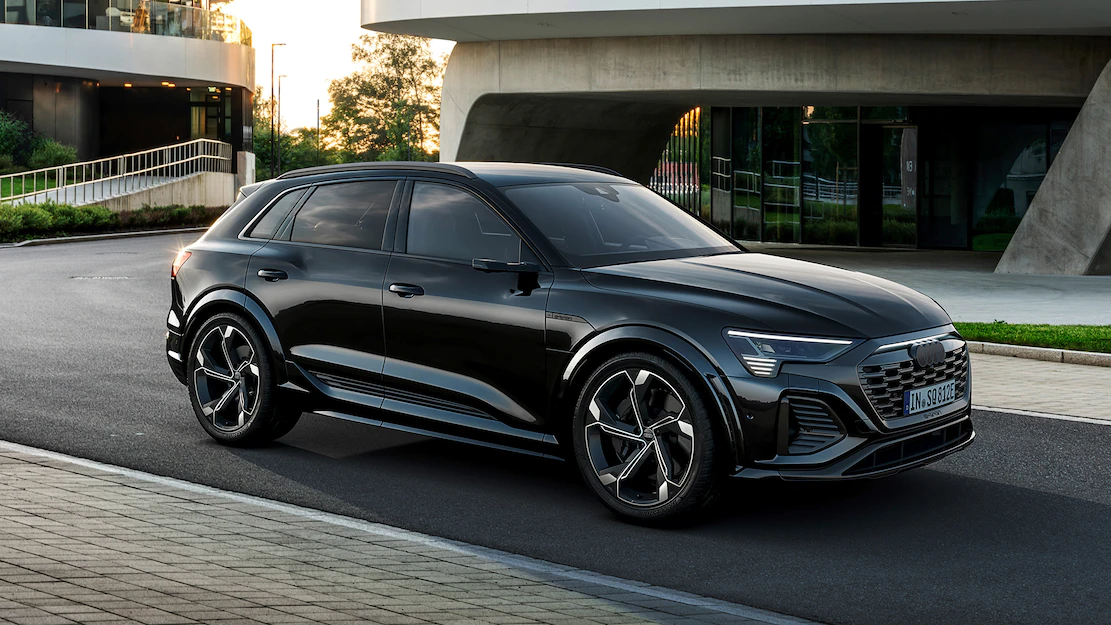
Audi also did some work on the E-Tron’s U.S. lineup naming structure, dubbing the new models Q8 55 (formerly the base E-Tron) and SQ8 (formerly E-Tron S), but didn’t do any real boosting to the EV SUV’s power or performance. Expect similar numbers to the existing 2023 E-Tron SUV lineup, which in the base model delivers 355 hp and 414 lb-ft of torque (404 hp and 490 in boost mode, and 5.1 seconds to 60 mph) and 429 hp and 596 lb-ft of torque in the E-Tron S (469 hp and 717 hp in boost mode, and an Audi-claimed 4.3 seconds to 60 mph).
Other New And Improved Stuff
While the power will be much the same, Audi boasts the Q8 E-Tron will have a quicker steering ratio and improved suspension arms. Customers reported to Audi that the E-Tron’s steering feel and tuning could be sportier. Audi’s response? “We rectified that.” Moving forward, all Q8 E-Trons worldwide will also have air suspension as standard, a system Audi engineers said they retuned for the new model.
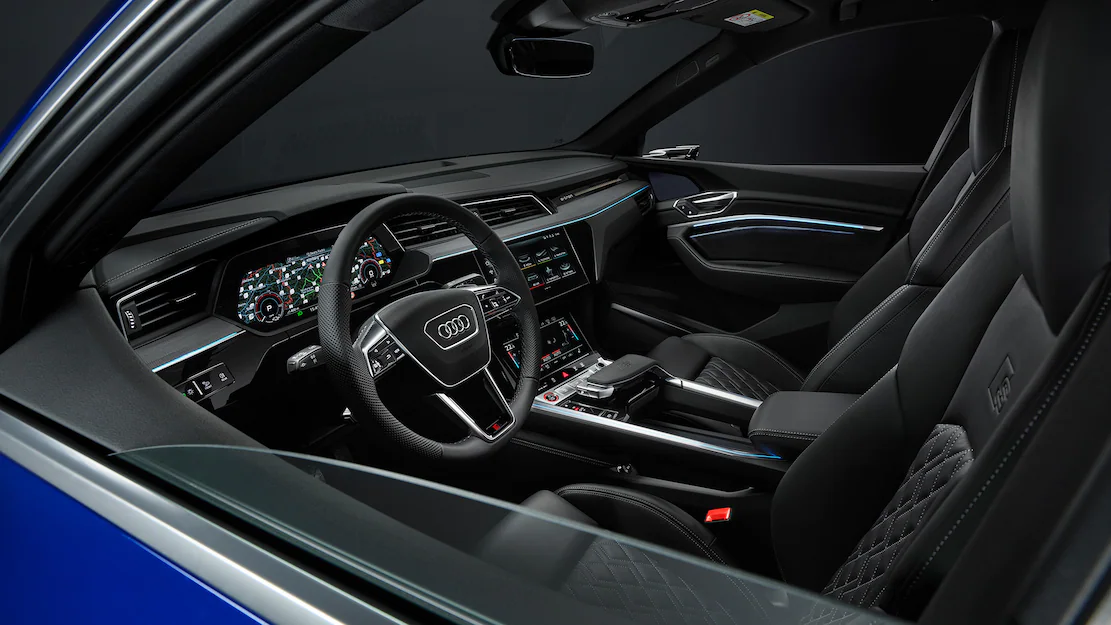
As before, the Q8 E-Trons will be Quattro all-wheel drive EVs, with the Q8 55 utilizing a front and rear motor and the SQ8 a single front and two rear motors that each power a rear wheel and can split torque between axles depending on the situation. One change to the new vehicle is an adjustment to the asynchronous rear motor that now utilizes 14 coils instead of the previous 12 to generate its electromagnetic field. Audi says the adjustment helps the motor generate a stronger magnetic field with roughly the same electricity input. This means there’s slightly more torque when called upon, but under normal operation the motor requires less energy, thereby helping lower consumption and increase range.
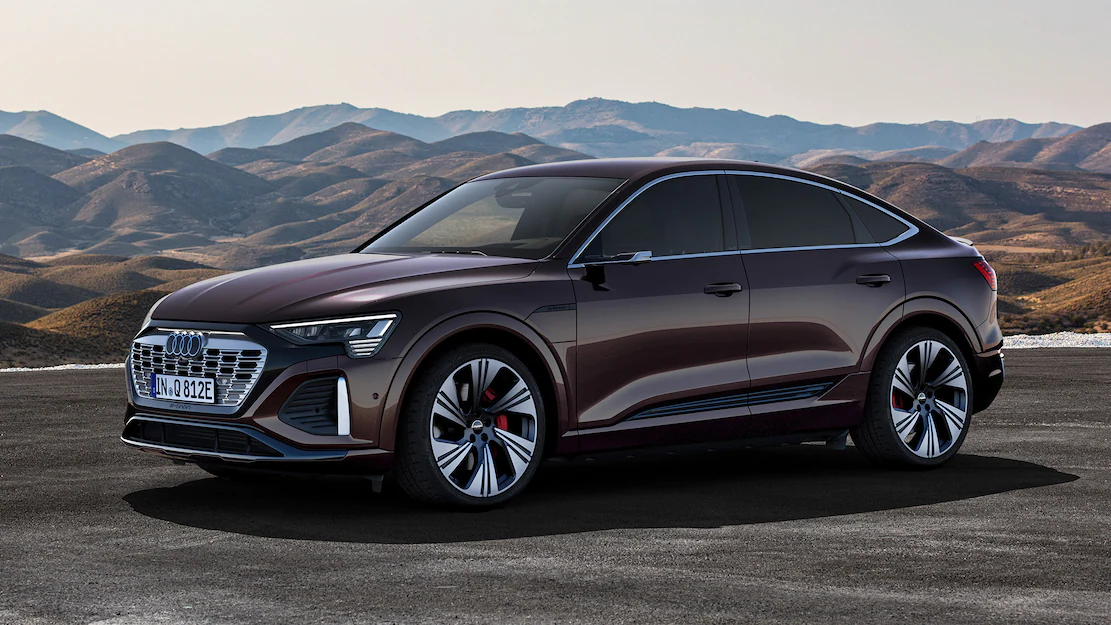
Audi’s impressive brake energy recovery system also carries over for the Q8 E-Tron, a feature you can set in different stages and effectively use for one-pedal driving in some 90 percent of everyday braking tasks, according to the automaker. The system also has a coasting feature, and Audi says it further tuned the vehicle to have the wheels spin more freely under no-load situations.
Why Q8? Halo Style
You may wonder at this point, why the Q8 name? Doesn’t Audi already have a gas-powered SUV called the Q8? Why yes, it does, and it’s at the top of its SUV heap from a style and price standpoint. Given that Audi is moving to an all-EV lineup, the time is apparently right to bring the E-Tron SUV under a halo label like the Q8. At first glance, it’s not a huge departure from the present E-Tron lineup style-wise, and it’s still available in base and Sportback models, but there are some noticeable differences depending on the variant. Look closer and you’ll see new wheel spoilers, a controllable air inlet designed to improve cooling and aerodynamics, and updated front and rear fascias featuring a new grille insert, and matrix LED headlamps. Audi also says the 2024 Q8 E-Tron will be its first model with what it calls a “new corporate identity” in the form of two-dimensional Audi rings in the grille and a model badge on the B-pillar.
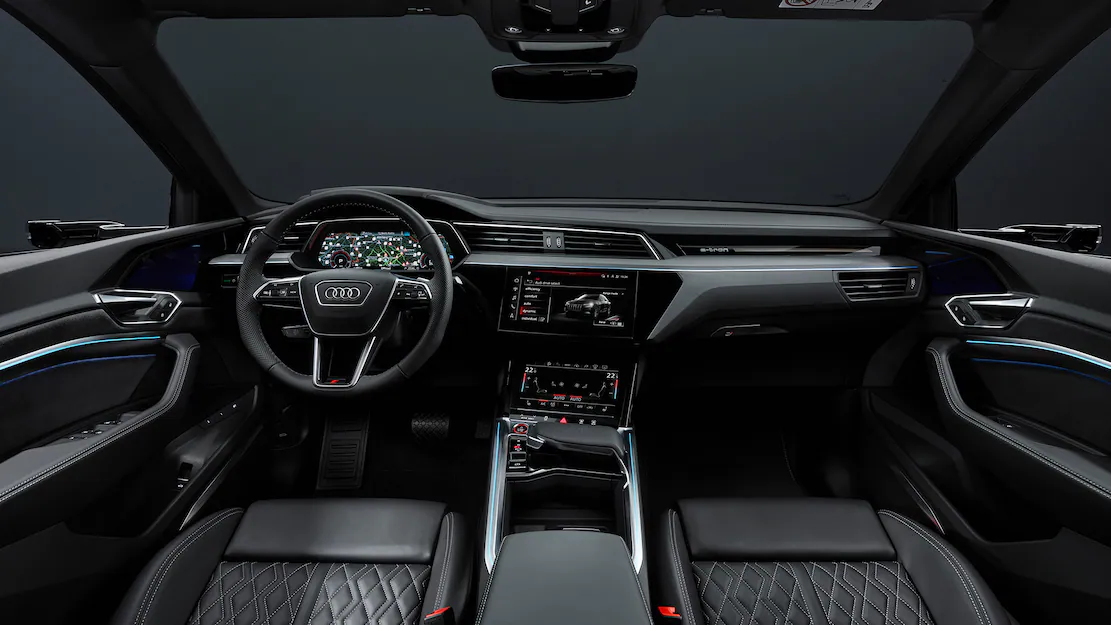
Inside, you’ll find much of the latest Audi tech and convenience features, including the MMI 8.6 and 10.1-inch diagonal haptic touch displays, and Audi’s Virtual Cockpit as standard.
What’s the new 2024 Audi Q8 EV going to cost when it hits U.S. showrooms sometime next spring? We expect a modest premium over the present 2023 E-Tron lineup, which starts at $72,580 for a base non-Sportback SUV and tops out north of $92,000 for the E-Tron S Sportback.
